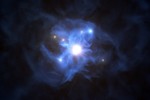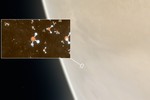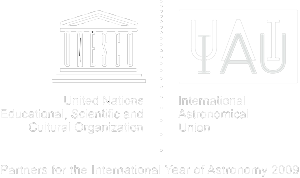Looking up at the night sky it's hard to believe that stars don't live forever. Most of the little twinkling lights we see scattered across the night sky have been there for the entirety of human history. But in reality, like humans, stars are born, they live, they grow old and eventually die. How they die, though, depends on their mass. Small stars gently puff out of existence, like blowing out a candle. Massive stars die in dramatic explosions, billions and billions of times more powerful than an atomic bomb!
Astronomer's believed that we'd pretty much figured out the exact life-cycle of stars with around the same mass as our Sun. It is expected that stars like the Sun will blow off much of their atmospheres into space near the end of their lives. This material then goes on to form the next generation of stars. Like the circle of life on Earth. But a new study of the ancient stars living in a globular cluster (which is a huge group of stars) has shaken the world of space science. It showed that many Sun-like stars never go through this stage of life at all!
The results of the study were a big surprise. It showed that all the stars in this violent “mass loss” phase of their lives were very old. And none of the slightly younger (although still very old!) stars had reached this phase at all! So, while we thought all stars of this mass reached this stage, it turns out that up to 70% of stars skip it altogether! Instead they evolve directly into retirement as white dwarf stars.
Cool Fact
Do you know why no-one has ever seen what happens when a low-mass star dies? Well, the Universe is around 13.8 billion years old. Stars with about 10 times less mass than our Sun have enough energy to live for six to twelve trillion years. That's longer than the Universe has even existed, yet!
Share:














